|
Ever since I read Ayrton Senna’s words describing his surreal out-of-body experience during qualifying for the 1988 Monaco Grand Prix, I’ve been on a quest to find others who have found the same magical place. Over the years I’ve met many great sports stars who have been there too: moments in the Zone that bend time and space and transcend reality as we know it. Occasionally I get really lucky and the human being telling me the story is still at the absolute top of their game, and the world. After Novak Djokovic collected his fourth Laureus World Sportsman of the Year Award in 2019, I grabbed my chance to enquire about his description of going into ‘another dimension’ during his near-perfect Australian Open semi-final earlier that year. Appropriately we were in Monaco so I brought up the similarity with Senna’s words. The Serbian superstar’s reply was as wonderful as I’ve come to expect from one of sport’s true class acts – and definitely, unmistakably Senna-esque. Here it is in full… ‘I actually watched Ayrton Senna’s documentary so I did hear him speaking about that,’ smiled Djokovic. ‘In my case there were several matches where you just feel like you’re having an out-of-body experience. One of them was in the final of the Australian Open in 2012 against Nadal when we played almost six hours. It’s really hard to explain when you feel like you’re present but somehow you’re also not present – because the physical pain is so big that you don’t feel your body any more, but you’re operating on some kind of autopilot that is taking you to your desired places, which you determine mentally. ‘It was one of those experiences where you just feel like there is a higher force that is driving you forward. I’m also a big believer in that, and I always rely on my faith and try to be grateful and understanding of a creator and a greater power and a universal help that we always see. So I try to remind myself of that, of how blessed I am and not to take things for granted because ego is a strange opposition at times, and it can play with your mind. ‘In this process of evolution as a human being I’ve learned a lot more about these things because I’ve become more aware of them. Before it was just… I hit a tennis ball and it was in or out, and I won a tennis match. But throughout the years it became much more than that. It became a spiritual journey. And because the tennis court is a place where I’m probably most vulnerable but also very confident and strong, a tennis court is a school of life for me: where I get triggered most and where I can understand myself on a deeper level. That’s because everything I maybe suppress outside of a tennis court surfaces there. ‘That’s probably one of the biggest reasons why I keep on playing tennis. I don’t see too many different places where I can actually evolve as a human being better than on a tennis court.’ Wow. To learn more about Djokovic’s approach to his art, read my earlier interview with him about his 2012 epic against Nadal which is a highlight of In The Zone - or check out the wonderful speech he gave while collecting the 2019 Laureus award…
0 Comments
Given the events of the last few months it’s no surprise that anxiety and other mental health problems are skyrocketing all over the world. Yet for those who feel helpless to fight back against this relentless diet of fear and gloom, help is at hand in the form of a new book due out in January 2021: How to Master Your Monkey Mind.
The Monkey Mind is how Chinese Buddhists have long described the nagging voice in our heads that flits from thought to thought, like a monkey swinging from tree to tree in the jungle. It is also the speciality of this book’s author, a very wise man who it has been my pleasure to get to know over the last ten years: Don MacPherson. Based on the outskirts of the British city of Bath, MacPherson (aka ‘the Monkey Whisperer’) is a mind coach and hypnotherapist who routinely hosts young hopefuls in sports ranging from rugby to snooker – including champions in everything from Formula 1 to Wimbledon. There’s no purple cloak or swinging watch but there is a reclining chair where he puts on soothing music and sets out to tame their Monkeys and put their subconscious minds back on track. Even so, rather than implanting sinister ways of thinking into vulnerable heads, MacPherson insists hypnotherapists tend to be called upon to rectify the effects of a life of hypnosis from another source entirely. ‘Ask my wife Jane to play tennis and she will politely decline,’ MacPherson told me when I spoke to him for In The Zone. ‘She’ll say: “I can’t play tennis! I don’t have an eye for the ball or any hand-eye coordination.” But if you gently pry as to why she holds such a view, she’ll say it must be true because: “Everybody has always told me I am hopeless at tennis.” ‘If you dare to go any further you might enquire who this “everybody” is. You may know a few: mothers, fathers, grandparents, friends, teachers, vicars, politicians, policemen, lawyers, doctors. They are Jane’s “everybody” and probably yours: all are hypnotists who were in action from her first attempt to hit a ball. No doubt she missed or mishit it, at which point I doubt she received much encouragement, more like “Oh dear, it doesn’t look like little Jane has much of an eye for a ball, shame...” from a well-meaning parent who didn’t realise the effect their negative comments can have on a young child hanging onto their every word. ‘Who was next? Other friends, all hypnotists joining in, compounding and confirming Jane is no good at tennis. Unless somebody interrupts this hypnotic trance, she is well on the way to believing it. Finally, whenever tennis is brought up, you will hear her unequivocally state: “I am hopeless at tennis”. This is as close as you can get to self-hypnosis but she has already been a victim of “accidental hypnosis”. It is now so deeply rooted in her subconscious that to shift it she would need a mind expert to try to reprogram her into “can-do” Jane.’ I’m sure we all have similar examples of pursuits we long ago abandoned as far beyond our puny capabilities – whether it’s sport, art, music, languages, maths or anything else. If we were to work our way back through time there would no doubt be a similar cast list of hypnotists. But few of them realise they were ever in our lives at all, just as we live in blissful ignorance of the similar effects we’ve had on countless, faceless others. We now live lives so complex in terms of interactions, from good old face-to-face contact to television, internet and social media, we face a daily onslaught of more swaying watches than Switzerland in an earthquake. Some situations can make people especially vulnerable to hypnosis, according to MacPherson: ‘You are in your Doctor’s surgery, about to hear the results of some tests,’ he adds. ‘Your conscious mind freezes whenever something important, exciting or scary is happening to you. At this point your GP is a full-blown hypnotist because they now have direct access to your subconscious mind, the real you. So they had better be very careful what they say… because you’re about to become another victim of accidental hypnosis. ‘If it’s bad news your first question is likely to be: “How long have I got?” If the reply is “six months” it is uncanny how accurate this forecast turns out to be. Have the patients been hypnotised, their brains programmed to believe it must be so without question? If the GP clicked his fingers just before giving the results would the patient suddenly cluck like a chicken or sing an Elvis song if they suggested it?’ Something tells me the whole world is under the effects of similar mass hypnosis right now, quivering with fear and clucking like chickens at the slightest suggestion from our all-powerful rulers. Yet before we start blaming anyone else we have to remember there is only one true leading light in our production: ourselves. No matter what anyone says it is only when our subconscious minds choose to believe it that a plot twist is written in stone. To quote parents everywhere: ‘If we ignore it, it will go away.’ The problem is that our deepest selves are not easy to control, no matter if we’re trying to ascertain whether or not to believe a news story, whether or not to believe we can hit a tennis ball over a net or even whether or not to believe we will live to see another Christmas. Now MacPherson is promising to give us everything we need to take back control, thanks to ‘ten simple tools to tune your brain.’ These are likely to include many of the mind secrets he has used with the stars over the years, everything from meditation and visualisation to ‘Zen Breathing’ which slows the heart rate with a simple deep breath, exhaling for longer than we inhale. This is the one toolbox we all need right now. So if you are heartily sick of 2020 and you fancy starting 2021 afresh I can only urge you to pre-order MacPherson’s book and prepare to start mastering your Monkey Mind. The level of expertise needed to be ‘in the Zone’ is not limited to sport. When Captain Chesley ‘Sully’ Sullenberger’s Airbus struck a flock of Canada geese after take-off in January 2009, he made the apparently snap decision to land on New York’s Hudson River. He later declared he’d spent 42 years making small deposits in a bank of experience; that day his balance was sufficient to make a ‘very large withdrawal’. This led Sully straight to the Zone when it mattered, saving 155 lives. No one is born able to fly an aeroplane, just as no one is born driving a car. To get good at either requires long hours as the brain gradually learns how to interpret the sensations sent in from all over the body as the vehicle rolls and yaws, converting this mass of data into instructions to send back to the limbs perched on the controls. This eventually crafts an ability to complete even the hardest tasks without thinking. Still, the proficiency of a lifetime of practice will be no use if you can’t access it on the one day, the one second when it really matters. If you ever suddenly find yourself having to think about what you’re doing, it’s a one-way street to remembering in vivid detail how staggeringly complex your skills were in the first place. Some professionals have an even bigger bank to draw on – such as British Airways 747 captain Paul Bonhomme, who doubles as a triple world champion in the Red Bull Air Race. Since 2003 this event has claimed the title of the world’s fastest motor sport as its single-seater planes twist, spin and loop, speeding at up to 250mph between a series of pylons just 25 metres above land and sea. Far from the crazy daredevils they appear, pilots are invited to compete only after proving they are among the world’s finest aerobatics aces. Bonhomme’s 19 career wins rank him as the all-time best of the best. ‘Whatever you’re flying, you have to be in the right mood,’ says Bonhomme, who retired from racing after his third title in 2015. ‘It varies if it’s an air race, an aerobatic display or just a flight from A to B. You’re supposed to fly a jumbo jet so far within safety levels it should be relaxing. But depending on how extremely you’re operating an aeroplane, you have to be in a better mood or, yes, “in the Zone”. ‘In air racing the challenge is getting out of a tricky situation. For that you need years of tumbling, flicking, stalling and spinning. That once saved my bacon in an air race and I know others who had similar situations. You need a heap of experience before you go air racing, just as you would want the best stick and rudder pilot flying an airliner. Ironically in both cases if you’ve got it hopefully you won’t need it. ‘Air racing is extraordinary because everything else in aviation is super-safe whereas this is suddenly using motor racing ethics. So there are two fears: the fear of not doing very well and the fear of frightening yourself – or worse. You need to get the mix in clear proportion. It doesn’t really matter if you come fifth instead of first but it really does matter if you’re not around at the next race…’ Australian ace Matt Hall nearly got that balance wrong during a 2010 race in Canada when he skimmed the water with his wingtips. He has since become one of the sport’s all-time greats by learning to manage his self-belief to be ready to peak – including an elaborate mental build-up over the course of a race weekend.
Hall approaches his mental groundwork with the rigour you might expect of a former Wing Commander in the Royal Australian Air Force. His countdown increases in rigidity as take-off time approaches, starting with a stretch first thing and a walk to clear his mind. Media interviews fit into the morning before the daily pilots’ briefing. Within the final hour he lies down in his hangar for precisely 21 minutes, with music building to a crescendo to wake him up with half an hour left. Then comes another set of mind flying, a last look at notes and video before he gets ‘suited and booted’ to be in his plane with twenty minutes left – all with an ongoing musical soundtrack until he swaps his headphones for his helmet six minutes before take-off. ‘I have set times for visualising the track, otherwise you end up over-preparing and you become stale,’ Hall tells me in the book In The Zone. ‘In the hours leading up to a race, on the hour I spend five minutes thinking about it. Then with one hour to go I’m in a formal routine where everything is planned by the minute so I’m not distracted and I have zero stress. The stress only comes when you start looking too far ahead. ‘Music works for me and I always listen to the same set of songs in a row. Every song represents something to me. There’s a song to pump me up when I’m getting dressed, then more relaxing songs as I visualise the track. When I’m strapped into the plane it’s rock – not hard rock but happy rock: “I’m happy to be doing this, my life’s not depending on it, I’m just here having fun and racing planes.” ‘That’s the last thing I do so when I start the engine so I know I’ve done everything I can, I’m confident and really happy to be here. Then it should go well. If you’re too pumped up you’ll just smash it. If you go out hoping you don’t make a mistake it won’t work because you won’t fly aggressively enough or you’ll be really tentative. You have to go in saying “How good is this? I can win this, let’s have a crack at it...”’ Despite everything Hall has long been the pretender, finishing second in the Red Bull Air Race world championship three times. When it was announced the series would not be continuing after 2019 it seemed his time was up. Yet in one of sport's great stories of redemption he somehow pulled it off, finally fulfilling his long-held dream in Japan last month (pictured above). The Australian may now be ‘reigning’ Red Bull Air Race World Champion forever, but something tells me there is one sensation he’ll miss most of all…. ‘On the best runs you don’t think about two gates time,’ he smiles. ‘You think about this gate coming up right now and the feel of the aircraft. That’s all. That’s when I know I’m on a really good run – because there’s not a single thought of doubt in my mind and not a single thought of the future. They talk about being “in the Zone” and when I have a good run, I definitely know. It’s a euphoric feeling. I can’t hear the engine any more, I’m just a passenger in the aircraft, just riding this magic carpet through the track.’ This is an adapted extract from In The Zone: How Champions Think and Win Big To celebrate today's publication of the paperback version of In The Zone in the USA, here is an exclusive extract from the book featuring my interview with Robby Naish, windsurfing and kitesurfing's most famous son - and its greatest ever competitor...
Few fields have the lines between success and failure marked out as clearly as sport. It may be hard to treat these two imposters just the same (as Rudyard Kipling suggests) but regardless of any outer glory or defeat that comes our way, the trick is to trump it with the pure passion for doing what we love. In 1976, a thirteen-year-old Robby Naish won the world windsurfing championship. The American was still winning titles decades later, before switching to kiteboarding in the Nineties and dominating that too. For those who battle waves and wind Naish is a legend. But to him it’s not about glory. The key to retaining the motivation to scale peak after peak is very human. You can set up home at the top of your field only if there is nothing on Earth you would rather be doing. ‘A lot of athletes are goal-oriented: they reach their goal, then they’re ready to move on to something else in their lives,’ Naish tells me. ‘I was never goal-oriented, it was the experience that I always loved. I was never trying to achieve any single thing. I didn’t want to become world champion then go and become a chef or take up golf. I realised this was what I wanted to do more than anything, and for as long as possible. It’s about the process and the enjoyment of everything that goes with it. ‘I’m lucky that my sport puts me in this pretty pleasant environment – but not always. Our events can be in miserable places like the North Sea when it’s bitter cold. But it’s taking that and enjoying it for what it is. I did that better than a lot of athletes. They’d be standing on the beach miserable and I’d just think: “Give it to me!” I loved being there. I’ve always been really appreciative that someone was actually paying me to do this so I’ve been able to make a living. That realisation helped me continue to push myself to stay in the Zone for all those years. It’s still going: people still pay me to go surfing. I’m not competing any more but in my eyes I’m still a professional athlete. I realise the whole life of being a sportsman is profoundly lucky.’ Before we start painting any picture of Naish as a happy-go-lucky type just out for a good time, there are familiar factors leading to his ability to maintain the heights. He started with a childhood of practice in the sunny Hawaiian surf, before an adulthood of total commitment. ‘In our sport the build-up to competitions starts before you get to the beach,’ says Naish. ‘You have a lot of equipment so you get your gear together and drive to the beach, then there’s the lead-up to a race. Throughout my career I was always the kind of guy who would go to bed early to prepare. Then I’d want to be at the beach before everyone else so when they showed up they’d see me and think: “Oh no, he’s already here.” All those elements helped me know I was ready mentally, physically and equipment-wise – and that I’d done everything better than everybody else. ‘I was lucky that personality-wise I was drawn that way. I hated losing so badly that I wanted to do everything possible to make sure I didn’t lose. It wasn’t so much the thrill of winning, it was doing everything I could to avoid that feeling of losing. For me competition was everything. It was mind, body, spirit, 100 percent focused. The enjoyment of that feeling was worth sacrificing any other things in life. Whether it was partying with my friends or whatever, it was no issue to sacrifice that to be as prepared as I could possibly be for competition.’ Naish sure doesn’t sound like your archetypal chilled-out surfer dude. But the Zone is so special it is worth any such sacrifice. Moreover if you find yourself facing anyone who finds this magical state, that would be a good time to start scrabbling for ‘luck’. While Naish similarly demoralised his opposition, that wasn’t the main point behind his painstaking work ethic before his events. The biggest effect was that it combined to put him into the right mental state to compete, turning Naish into one of the elite who found a way to access the Zone at will. ‘Different athletes have different ways to put themselves into that Zone: little rituals they need to bring them to that point,’ says Naish. ‘I never figured that out as I didn’t have to count crows to put my mind into that space. It would come naturally. But I’ve always been really nervous, internalising it, to the point that knowing I was nervous meant I really wanted it. If it is comfortable and natural, someone who wants it more will beat you. If I was lackadaisical it would be time to do something else. ‘So I never had to think about it – until the times I wasn’t there and I’d realise what it feels like not to be in the Zone. Fortunately it didn’t happen often: through my entire career I was there 99 percent of the time. But it was profoundly obvious when I wasn’t. When it didn’t come together you’d sit there knowing you weren’t quite there. You’d never figure out what happened or why. Occasionally you could click yourself back into the right state but when you couldn’t, you’d have a bad day. ‘Part of being in the Zone for an athlete is being able to put all your baggage aside. Whatever is going on in your life that morning, yesterday or last week, or that injury that is nagging you, you have to put it completely out of your mind. It’s about cutting everything else out so you can focus 100 percent on the job in that second – or the eight minutes of the heat or the half-hour, whatever the contest is. Everything else in the world disappears for that moment in time...’ This is an extract from In The Zone: How Champions Think and Win Big - out now in paperback... Many thanks to the Euronews website LivingIt for featuring a selection of new articles - based on In The Zone - exploring the mental side of performing at the absolute limit in some of the most extreme sports out there. Ahead of this weekend's Ironman World Championship at Hawaii's Kailua-Kona, hear from the 2015 and 2016 world champion Jan Frodeno (pictured above). The German is clearly one of the fittest human beings on the planet but you can find out why he considers that even in the ultimate physical challenge, the difference between the best and the rest is always about mental strength. Click here to read all about it... It is now seven years since Roz Savage completed the final leg of a truly epic adventure, becoming the first woman to row single-handed across the Atlantic, Pacific and Indian Oceans. She told me she didn't feel strong mentally at first, but over the course the experience of taking on such a huge challenge she learned all about the true meaning of resilience. Click here to find out more... Finally, in an exclusive interview big wave surf legend Garrett McNamara describes the spiritual experience involved in taking on the most violent experiences nature can throw at us: 'I look at the tallest tree, the mountains, the ocean and the universe, attract it and breathe it all in...'
If you want to feel the force, read on. Today marks two years since we lost one of the world’s great free spirits and adventurers, Hannes Arch.
As a youngster growing up in Austria’s mountains, Arch spent his time climbing. He took up hang-gliding aged 15 before a switch to paragliding and BASE jumping. The Austrian would become a true pioneer as the first man to leap from the North Face of the Eiger and the first to land a paraglider on a hot air balloon. Arch later allowed himself the relative comfort of an aeroplane, seeing off the world’s best aerobatic pilots to win the 2008 Red Bull Air Race world championship. ‘If you do all those really dangerous sports you know exactly where you are,’ Arch told me in a 2014 interview that features in the book In The Zone. ‘Nobody wants to die, especially me, because I really love life. Sometimes you turn around and don’t jump because you know it would be dangerous. ‘These sports also teach you to handle risk so they are the perfect preparation for air racing: focus is the most important factor for surviving dangerous sports, but also to be fast in air racing. The interesting thing is that if you are in this mindset – focused 100 percent on flying without having to deal with thoughts of crashing or risk – you get really fast. And when you get really fast you realise you are always really safe. When you start to risk and play unsafe it slows you down.’ Air racing is such an extreme sport it forces pilots into clearing their minds – fast – and it’s the same with all who push to the edge. Arch sure was fast, too. Overall he won 11 races, finishing in the Red Bull Air Race top three for five straight years. Elsewhere this ‘lover of life’ invented the Red Bull X-Alps: a punishing dash from Salzburg to Monaco by foot or paraglider. The latest edition took place in July, 2017 and the event will continue as a living legacy to its crazily creative craftsman. Arch also used his skills as a helicopter pilot to help out with charity efforts in Nepal by ferrying supplies to remote mountain communities. He was flying a helicopter from a hut in his beloved Austrian mountains when he crashed and died on September 8, 2016 – just shy of his 49th birthday. Thanks for all the memories, Hannes. And keep flying high. Since In The Zone has come out in paperback I've been interviewed for a couple more articles in the media.
Thank you very much to the Leaders Performance Institute and writer John Portch for their feature about the lessons of In The Zone. It features some of the book's insights from Ayrton Senna, Nadia Comaneci, Novak Djokovic, Michael Phelps and more. Here's the link... Elsewhere Motor Sport magazine have published a feature on the out-of-body experience in motor racing, which featured heavily in my 2010 book Overdrive: Formula 1 in the Zone. Written by Joe Dunn, it includes fascinating insights about the subject from Damon Hill, David Brabham, mind coach Don MacPherson, Neuropharmacology Professor David Dexter and more. Click here to read more... In a series of famous experiments dating back half a century, scientists tested expert chess players on their ability to recall a board they had seen for a few seconds. When the set-up came from a genuine match the masters could accurately place most of the pieces, faring much better than inexperienced players. But when the pieces were just scattered randomly the experts fared little better than the novices. The conclusion was that chess masters are busy ‘chunking’ the individual pieces into recognisable patterns they remember from previous games. And it seems this effect can apply anywhere, no matter how apparently ‘cerebral’ the pursuit – or indeed what type of board you use. That's why Mick Fanning considers himself lucky to grow up on the coast of South Australia, learning to surf when he was five. This lifetime of education on the water set him up to earn a living from what he loves most. Now known as ‘White Lightning’, he has been crowned world surfing champion three times. ‘The ocean is forever changing so you never know what it will dish up each day,’ says Fanning. ‘You can have the same charts but every wave is totally different. Like anything, with experience you see the different shape of the wave or a different movement in the ocean and think: “I remember that back then…” It becomes a sixth sense for some people. There are surfers who always find themselves in the perfect place in the line-up but that’s just from experience and reading the ocean.’ There are limits. Fanning was competing at South Africa’s Jeffreys Bay in 2015 when every movie lover’s worst seaside nightmare suddenly got real. He felt a presence behind him, then heard a splash. The fin that duly appeared next to him was not a dream, it belonged to a 12-foot-long great white shark. The Australian’s instant reaction, captured on live TV and since viewed 24 million times on YouTube, was to hit out and wedge his surfboard between himself and his aquatic acquaintance, which bit off his leash. A response team eventually picked Fanning up, by which time he’d saved himself from turning into main course for one reason: he was in the Zone. ‘Throughout that whole day I felt amazing,’ Fanning tells me. ‘If you can get in that Zone and not think, it just becomes autopilot. That’s when you’re in your best form, and it’s what we focus on as athletes. So it was probably a blessing in disguise that this happened during an actual event and I was so centred at the time. If I wasn’t in that place maybe something else could have happened and I wouldn’t have reacted that quickly. ‘To be totally honest when I got back to land and saw the footage, I was sitting there wondering: “When did I make this decision? Or that one?” To me it went on a lot longer than what the footage showed. It felt like a good five minutes when it was really just ten seconds. But I guess that’s how fast the mind works.’ This is another classic component of life at the limit – in car crashes and other near-death experiences. When we are scrabbling for a way out of trouble, the brain is awoken from its everyday ‘tick-over’ slumber mode by a sudden influx of adrenalin and speeds up accordingly. Survivors consistently report the outside world – such as the shards of glass shattering on the windscreen – going into slow-motion. This ‘fight-or-flight’ mode doesn’t let us move our limbs any faster but our decision-making does accelerate, as long as we don’t go into panic mode and freeze. At our highest peak of total concentration it seems we can not only bend space, we can bend time too. Fanning was already at such an extreme of focus he could slip straight into the right state, fitting 300 seconds worth of critical life-saving calculations into ten. Even more mind-blowing is the fact Fanning was back surfing within a week. He admits to feeling jittery when he heard splashes near him yet he found a way over it: a year later he returned to Jeffreys Bay and won the event. ‘It was one of those moments that sticks out, that’s for sure,’ he deadpans. ‘It put me off a bit from getting back in the water but the more time I took away from the ocean was going to make it even harder. So I just felt I needed to get back in and get on with life. We get dealt with different adversity through life: you can be crippled by it or you can move forward. I always try to take a step forward. I’ve been lucky to be in the ocean my whole life so to have one incident… I put it in the same perspective as when you’re walking across the street and almost get hit by a car. That happens to people every day and others have been hit. So I consider myself extremely lucky.’ This extract is from In The Zone: How Champions Think and Win Big - out in paperback tomorrow... Victoria Pendleton sure loves challenges. The double Olympic cycling gold medallist has already tamed National Hunt horse racing and today she announced she is taking on the big one: Mount Everest. Getting it wrong on a bike or a horse and you might get beaten up but you’re likely to live to tell the tale. By contrast mountaineering takes everything to a new level. In the 64 years since Edmund Hillary and Sherpa Tensing first reached the top of the world, 280 people have died attempting to repeat the feat. Moreover, despite her run of success and glory on track and off, Pendleton has always been one of those sportspeople who have had to fight hard to win the belief required to perform. Luckily she is still able to draw on what she learned as a cyclist through the mentoring of Team GB sports psychiatrist Steve Peters. ‘The key to getting in the Zone is mental preparation,’ Pendleton tells me in In The Zone. ‘It’s a lifelong process, like physical training – and it becomes easier, the more you practise it. Some people naturally have a level of confidence which never falters. Then there are others who have slight insecurities. I’m one of those people. So it’s something I had to work hard on. It’s about eliminating negativity to focus on the task in hand without any doubts or distractions.’ Pendleton’s ability to focus will be tested to the limit during her May 2018 attempt on the world’s highest mountain, where she will be accompanied by TV adventurer Ben Fogle plus a team of sherpas and experienced mountaineers. But if Pendleton needs any extra advice on how to make such a switch of sports, she should turn to Japanese racer Ukyo Katayama, who raced in Formula 1 for six years in the Nineties before taking to the mountains. ‘Throughout my whole life I have sought new ways to exercise my mind and when I stopped F1 I had to find a new challenge,’ Katayama told me in Overdrive. ‘Driving racing cars and climbing mountains look completely different but they are actually very similar. For both racing drivers and mountaineers the battle is totally within, against yourself. ‘In Formula 1 you’re always pushing to gain thousandths of a second under braking, and you have to push yourself in exactly the same way on the mountains. One in 13 mountaineers dies due to falls, hidden crevasses and avalanches. Everyone living on the edge like that is the same. In my case, it is only in an environment like that I can feel truly free.’ This may seem like a curious type of freedom to those of us who have spent our lives nearer sea level, venturing up into the skies only inside a pressurised cabin. Mention the Zone to a mountaineer and they’ll think you’re talking about the ‘Death Zone’, the notorious height above which the effects on the human body are most dangerous. As one such adventurer told me: ‘Going up is optional, coming down is compulsory…’ For Katayama the act of pushing limits is the end in itself. In 2002 he even failed in a bid to climb Mount Everest, reaching the Southern Peak when his Sherpa broke his arm within sight of the summit. Katayama tried dragging him up until he started to run short of oxygen and he opted for the ‘compulsory’ downhill bit. He still enjoys the memories regardless of the outcome… ‘I was 60 metres from the summit of Mount Everest and I could see amazing views,’ he says. ‘I can’t stay in the safety zone, I have to push and find new limits. The main thing is to take the plunge. If you spend your life protecting yourself you may not fall down but you won’t achieve anything either. The only real way to live life is to fight. The most important thing is to know what you want to do. That’s all you need.’ Victoria Pendleton certainly knows what she needs, and she’s prepared to fight for it. Reaching this ultimate peak will require facing nature at its most brutal but there is payback. Indeed these extremes took Katayama beyond the confines of his usual mental state, triggering an extraordinary overhaul in the efficiency of his eyes, ears and nose. ‘When I am in the mountains and especially if I have been above 7000m for a whole month the sensations become hard to express in language,’ he says. ‘The best way I can describe it is that it feels like my body goes to liquid. I have no motivation and no need to own anything. It’s easy to forget to eat and drink. You can’t feel how cold it is, you just feel part of nature. ‘After that length of time my senses become so acute I can even smell danger. Before an avalanche I can feel something is wrong – maybe I sense a change in temperature – then 30 seconds later it happens. The message comes from outside, it’s just your senses working to their full ability.’ The secret to reaching this level of perception is to de-clutter the mind. Paradoxically it is far more attainable in such fearsome environments than in the comparative safety of daily life. Katayama still hasn’t slowed down, now running ‘Team Ukyo’ that has achieved success both in Super GT motor racing (where Jenson Button will compete in 2018) and road race cycling. Katayama insists we can all find this magical state of mind, just by getting active. ‘I’ve never had a feeling like that sitting in front of a computer,’ confirms Katayama, ‘because I’m always thinking about how to make money or my family. It’s impossible to find it. Motor racing’s the same: you worry about keeping your seat until you get in the car, when you block all that out. But you don’t even need to be in a car; it can be on a bike or walking. People have such good powers of concentration – and everyone has this potential within them.’ Some days really are ‘your day’. November 28, 2010 was Filipe Albuquerque’s day as this young Portuguese racer emerged from obscurity to defeat a line-up of legends – including Sebastian Vettel, Michael Schumacher and Alain Prost, who have 15 F1 world titles between them – to take the Race Of Champions crown at his first attempt.
Ho hum, not bad. But today was my day. I don’t believe you can ask Nadia Comaneci or Usain Bolt for a piggy back to get a close-up of what they do. Yet here I was lapping the same twisty racetrack inside a Düsseldorf football stadium – in the passenger seat one year later as Albuquerque revved the very KTM X-Bow he had used to defeat Vettel. I was soon given no doubt about how seriously Albuquerque was taking this. Even on the supposedly gentle run to the start line he ensured the car rarely felt like a car at all. As he put heat in the tyres with a series of weaves and burnouts, the X-Bow would suddenly feel unsettlingly light as if we were on a futuristic hoverboard. By the time we were waved away for the actual timed laps I admit to losing circulation in my knuckles: mercifully this was to be a short run or my typing days were over. As the lights went out and we lurched forwards I knew I had to suspend every idea I’d ever cultivated about the speed that corners should be taken. The track also featured a specially-built 100-tonne crossover bridge linking its two loops, like a giant Scalextric set. I now understand why bridges do not feature more widely in motor sport: on entry, all you can see is the top tier of the stands. As we launched skywards at full throttle all evidence suggested our inevitable final destination would be Row Z. Yet as soon as the laws of physics overcame any brief moment of ‘air’ my nonchalant chauffeur was on the anchors for the next right-hander. With the reflex of self-preservation beaten into submission, I focused the rest of my simpering mental capacity on the majesty of Albuquerque’s skill. That was not hard because racing at the top level is an art. He didn’t just hurl the X-Bow round the track, he danced. Every time the back end skipped out this leading man teased it back in line and away we shimmied round the floor, whirls seamlessly blending into reels and pirouettes. Too soon it was over and I let fly with the whoop I’d been stifling for fear of breaking the concentration of the maestro beside me. Some chance… ‘Being a racing driver is all about chasing the perfect lap,’ says Albuquerque. ‘Getting to the limit is what gives us the pleasure. When you put on new tyres you are so much faster everywhere and the feeling is amazing. You go corner by corner and you’re not thinking about the lap. You just push to the absolute limit, almost locking the front wheels. I like oversteer so I need to feel a little slide at the rear otherwise I feel too safe. I don’t breathe on the fast corners to make sure there is no movement at all, I just swerve it out. When all this comes together it’s fantastic. ‘The feeling is unbelievable and really makes you happy. You feel arrogant, like “Damn I’m good” – not meaning no one can beat you, but that this was a perfect lap, one you would like to show your friends. You think, “Wow. If someone beats me I’ll shake their hand because they’re definitely faster than me.” ‘Sometimes I can’t even explain to myself how I could do it. You look at the time and think, “How did I do that?” I don’t know but I’m not bothered. You don’t even need to see the data to know no one will beat you because the car has really gone beyond the limit. The secret is just to let it happen like you think it will. Be yourself in the car, be natural and just do it. If you go faster, awesome, if not keep trying.’ To make it big in motor racing you clearly have to nail this perfect lap when it really matters, preferably with monotonous regularity. Albuquerque, who now focuses on endurance racing, recalls one such lap when he took Nürburgring pole by half a second in Formula Renault. But after he was snapped up by Red Bull’s young driver programme, his results weren’t consistent enough and he was dumped. He was racing in an unglamorous category of Italian GTs when he won a regional qualifying event for the Race Of Champions. That’s when he grabbed his chance. ‘It just felt like my day,’ he beams. ‘I was happy to have a chance to compare my speed with the best guys in the world. I felt good in every car and I nailed it. The races were like qualifying laps. I had many corners when I said this was just perfect, going right up to the wall and sweeping down. I was braking very late but not too late, turning in and flicking the car just right. Of course I made some small mistakes during the event because it’s not possible to do ten races with no mistakes. But you need to make a judgement about how many risks to take. ‘For the final against Sébastien Loeb I just went in thinking I’d do my best and try to perform like I’d pictured in my mind. Then let’s see how my speed compares to him with my perfect lap. He was on it, too. I beat him by a hundredth in the first heat of the final, then made a small mistake in heat two and he beat me by two hundredths. In the decider I pushed very hard, almost crashing all the time, but made no mistakes. So my perfect lap was enough to beat him and everyone in the Race Of Champions.’ Nine-time world rally champion Loeb confirms he was beaten fair and square by this relative unknown: ‘I gave everything and did a good race but he was just a bit faster. He was just flying…’ This extract is from In The Zone: How Champions Think and Win Big. Out now… Mindfulness. Pure focus. Total concentration. That magical sensation of quieting the mind and living in the now… These concepts have only recently breached mainstream Western consciousness, yet over the last decade they have gained ever greater prominence. But it’s not just about sitting cross-legged on a mountaintop, or even staring at a candle in the living room. The path to ultimate inner peace can appear anywhere – and a shortcut is often found in conditions that are diametrically opposed to any idea of ‘calm’. Sport is a classic example, especially those involving extremes of speed – such as the world’s fastest form of motorsport, the Red Bull Air Race, where single-seater planes twist, spin and loop just metres above land and sea. In the new book In The Zone, Germany’s reigning air race world champion Matthias Dolderer insists: ‘You’re so focused and concentrated there is nothing else that can distract you. You don’t have time and you are fully 100 percent concentrated on what you’re doing. When you fly, whatever happened before this is gone. Actually, to fly in the racetrack is the best way to get rid of all distractions.’ Mindful? Focused? Concentrated? Check. This clutter-free mind is crucial for sport, hence why techniques to induce this state of mind are now commonplace. Legendary NBA coach Phil Jackson used this approach to mould his successful Chicago Bulls and LA Lakers teams, while Nico Rosberg admits he turned to meditation to find the mental strength to beat Lewis Hamilton to the 2016 F1 world championship. But really there’s nothing new about this hunt; ‘Zen’ Buddhism is a derivation of the Indian Sanskrit ‘dhanya’ meaning meditative concentration. Today Japanese air racer Yoshihide Muroya makes for a good example as a practitioner of zazen, which translates as ‘sitting meditation’. ‘Meditation helps me because it’s mental training,’ Muroya tells me for In The Zone. ‘At an air race I do it every morning. I use it to focus on myself, just to calm down and take away the extraneous thoughts that have been going through my head. In racing there’s no time to think so you need to be focused and automatic.’ Something must have paid off: Muroya heads to his home race in Japan’s Chiba this weekend looking for a repeat of his debut win at the same venue last year. He also won this year’s latest race in San Diego to raise hopes of a Japanese motorsport double in a week following Takuma Sato's Indy 500 win. Best of all, Muroya insists we can all reap the rewards of ‘looking inside’ even if our own office moves rather slower. ‘Meditation is good for flying and it’s a big help for life too,’ he smiles. ‘Everyone can benefit from it. We all have so much going round our brains all the time and we normally look outside so it’s quite difficult to look deep inside. But it’s really good to calm down and looking inside helps make life easier for anyone.’ Read In The Zone to hear more from British Red Bull Air Race world champions Paul Bonhomme and Nigel Lamb plus Canadian racer Pete McLeod, among 100 exclusive interviews with stars of world sport |
AuthorClyde Brolin spent over a decade working in F1 before moving on to the wider world of sport - all in a bid to discover the untapped power of the human mind. Archives
October 2024
Categories
All
|



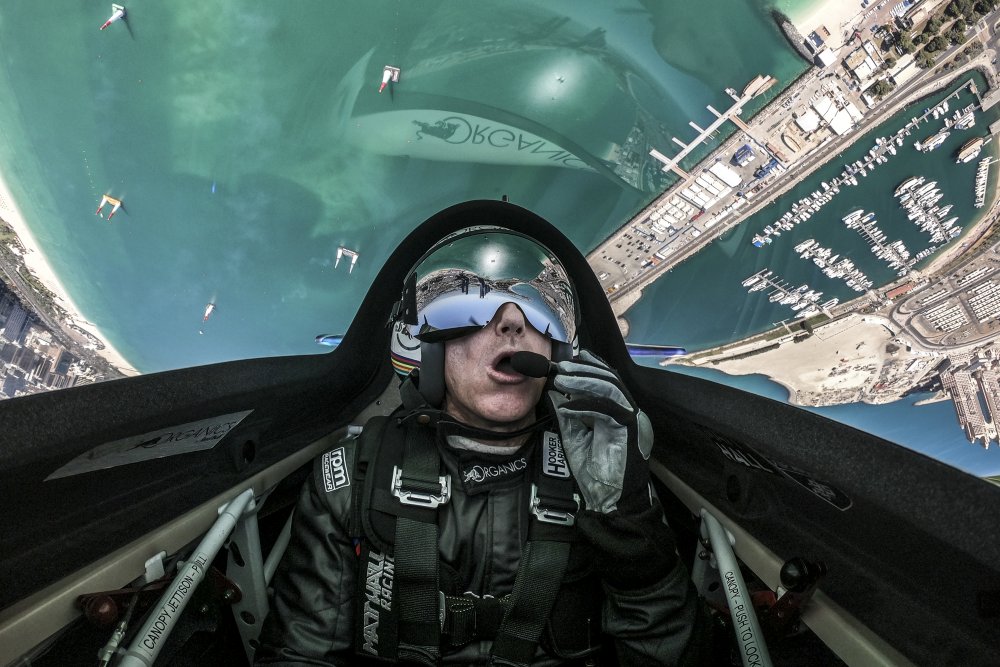
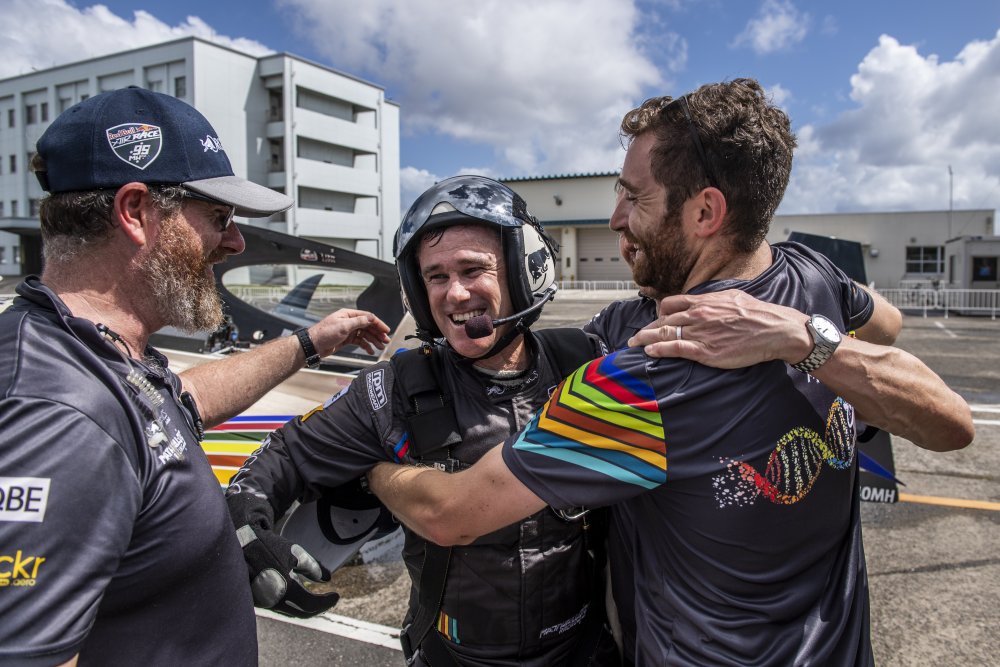
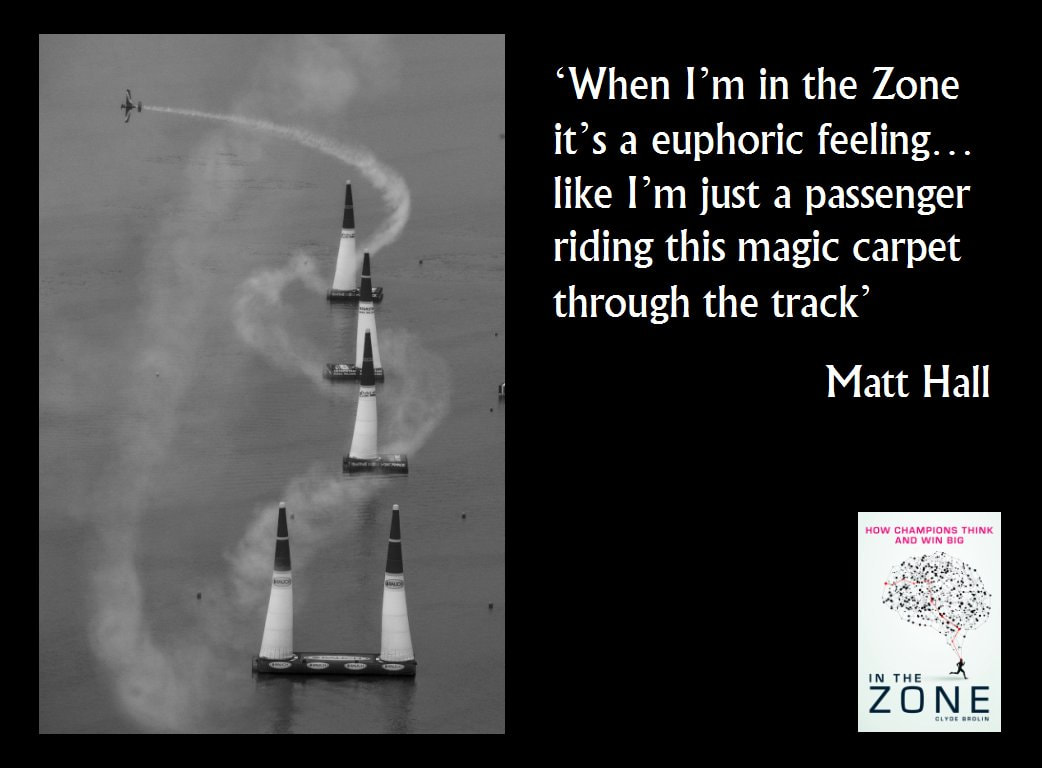
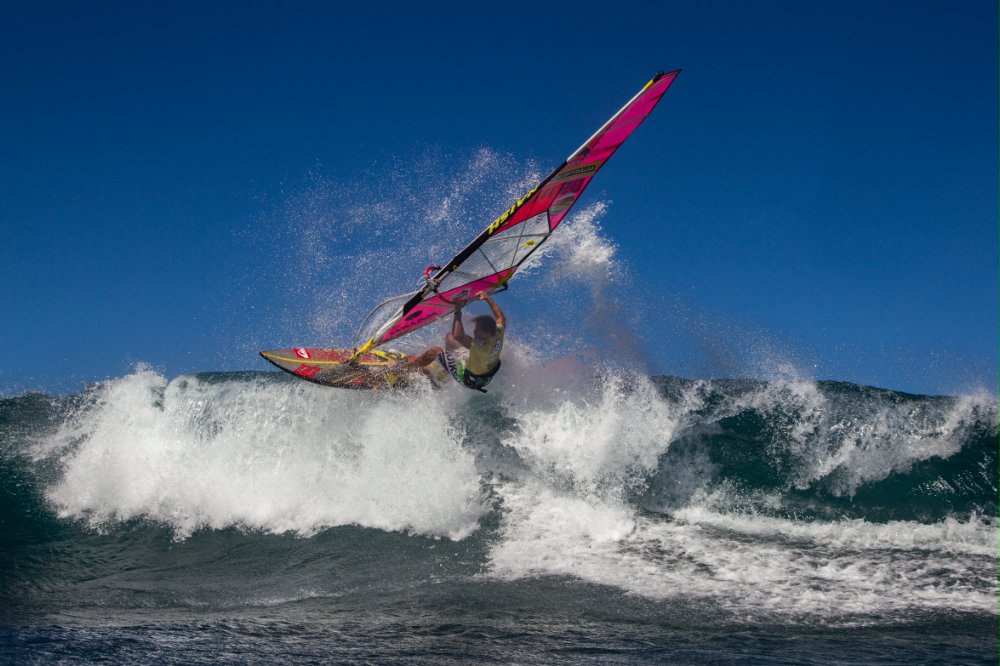


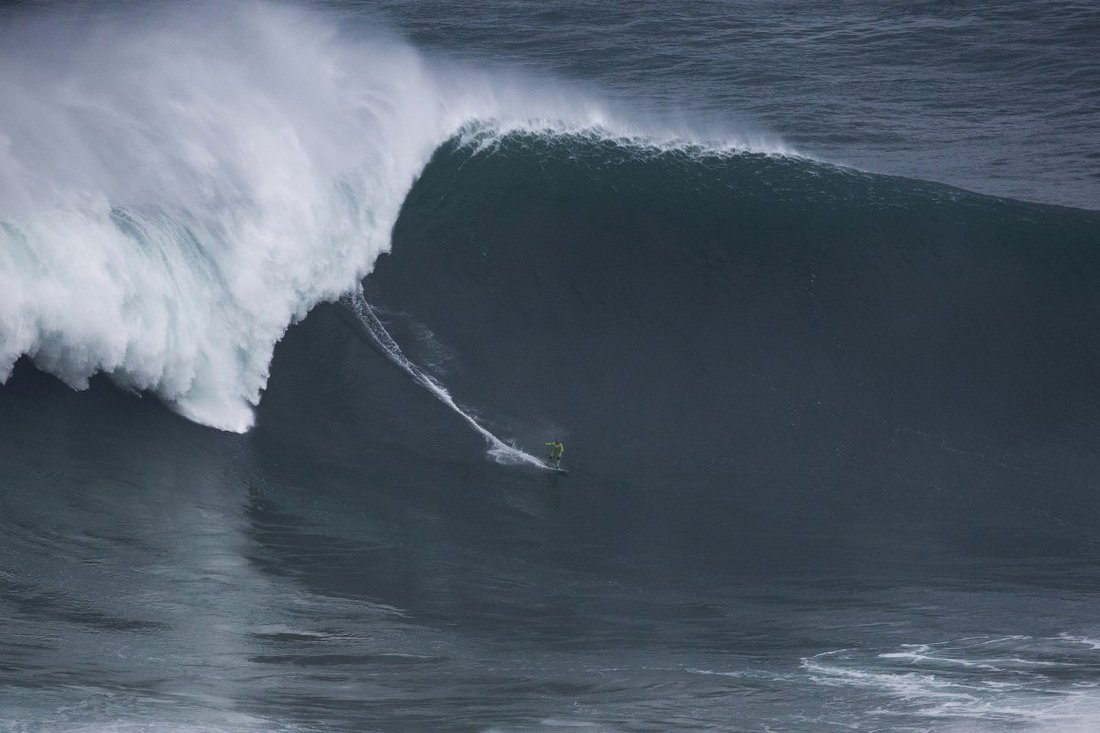



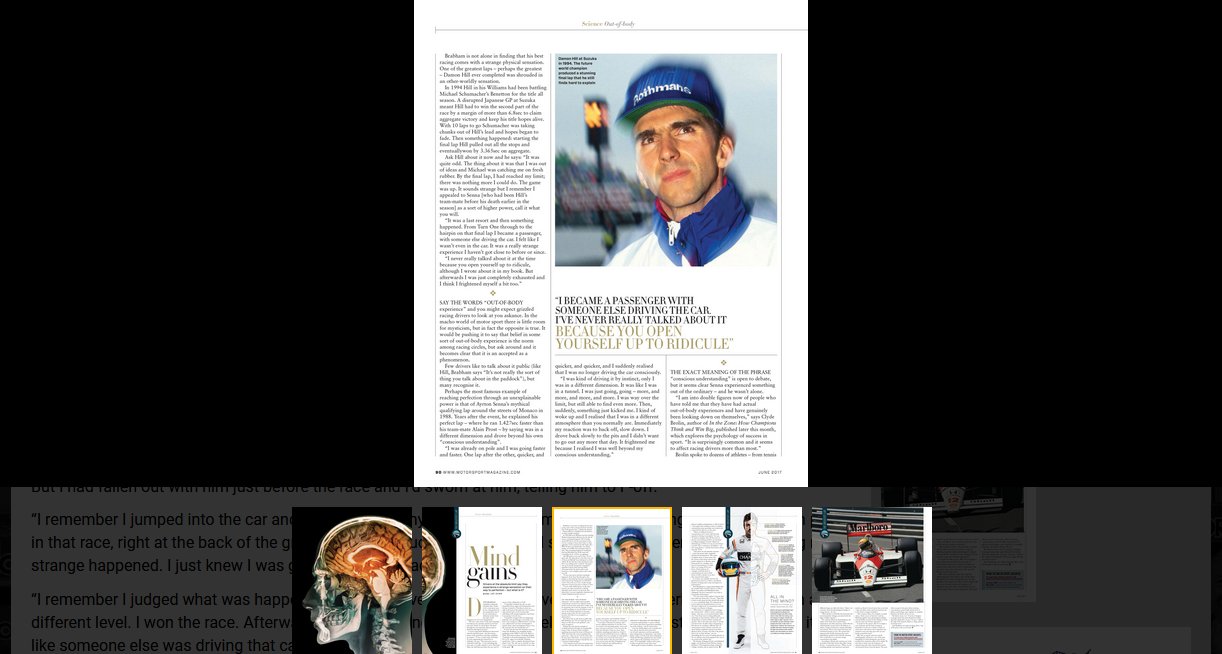
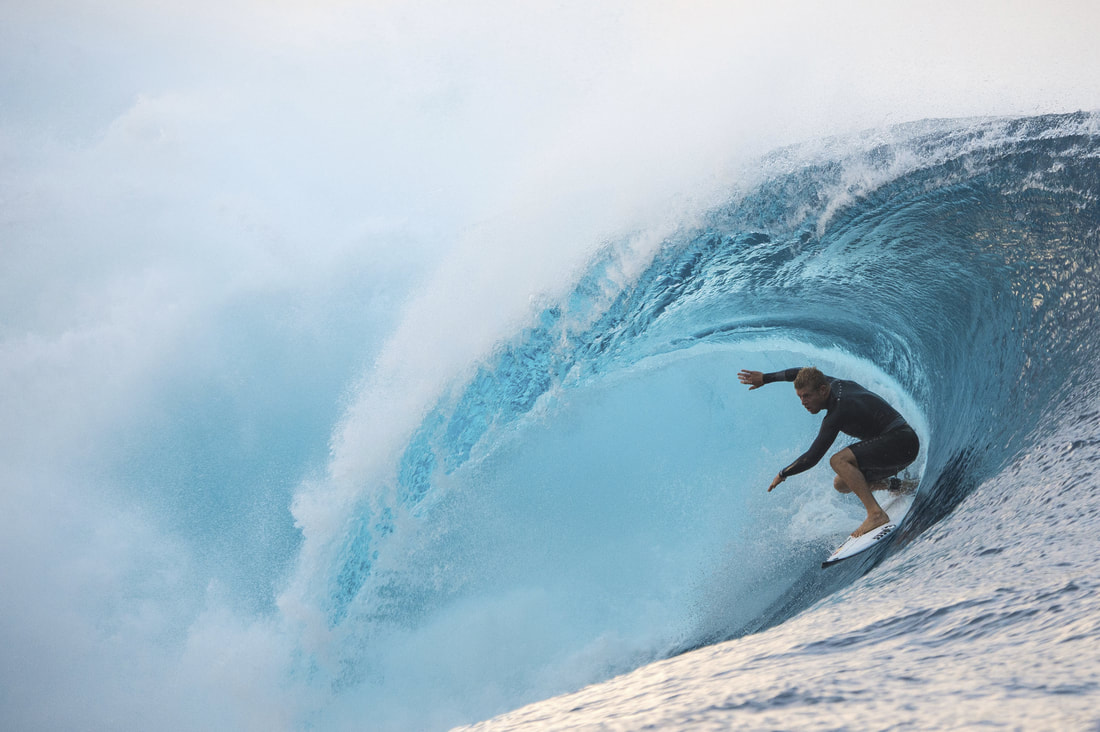
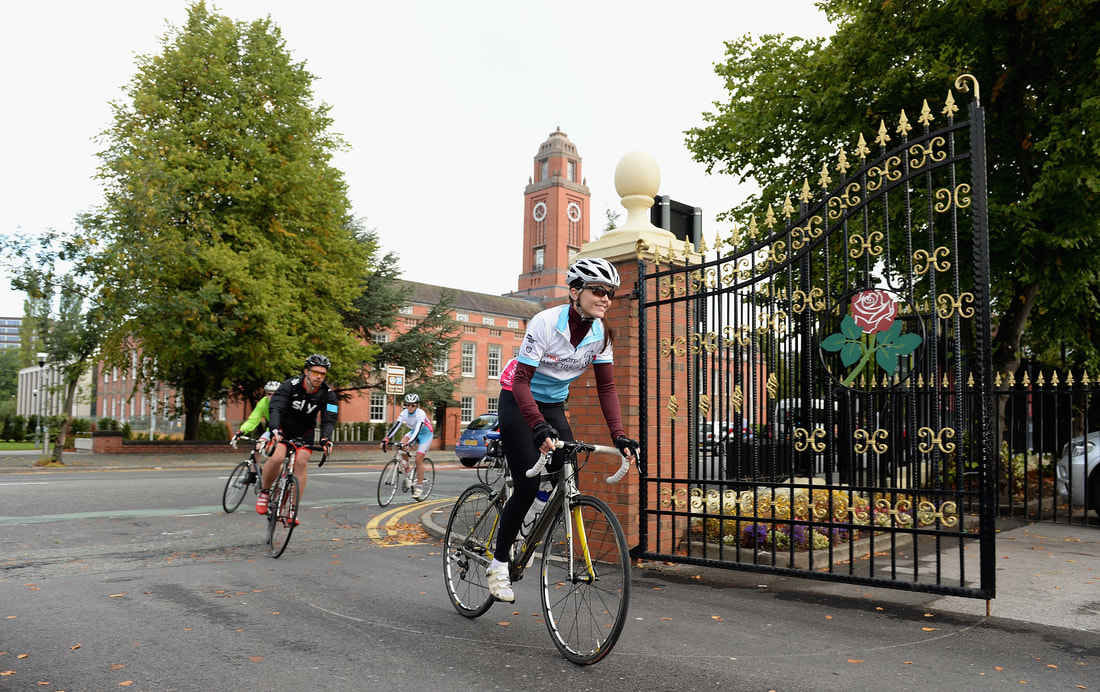


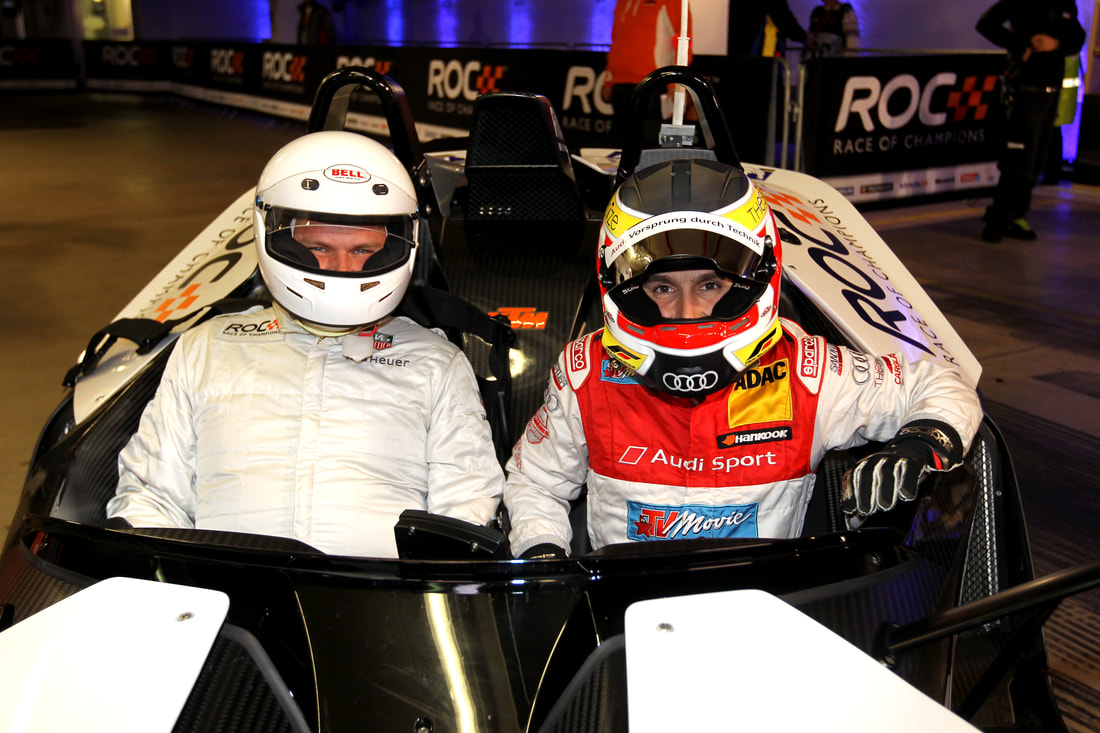
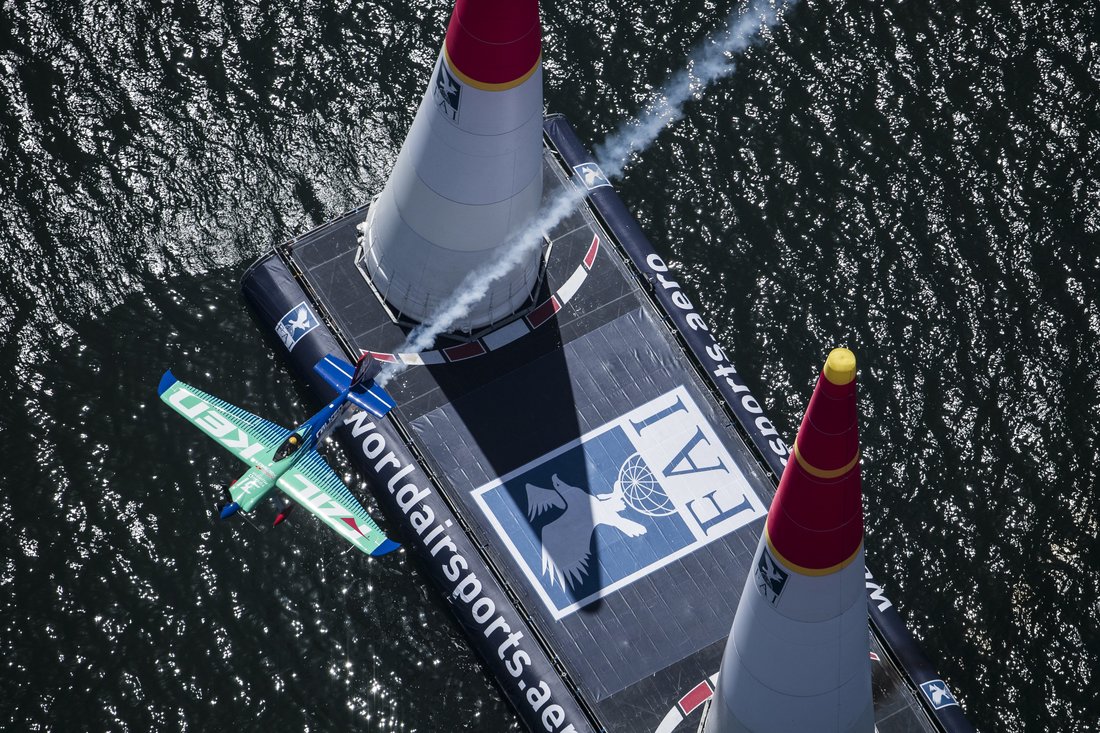

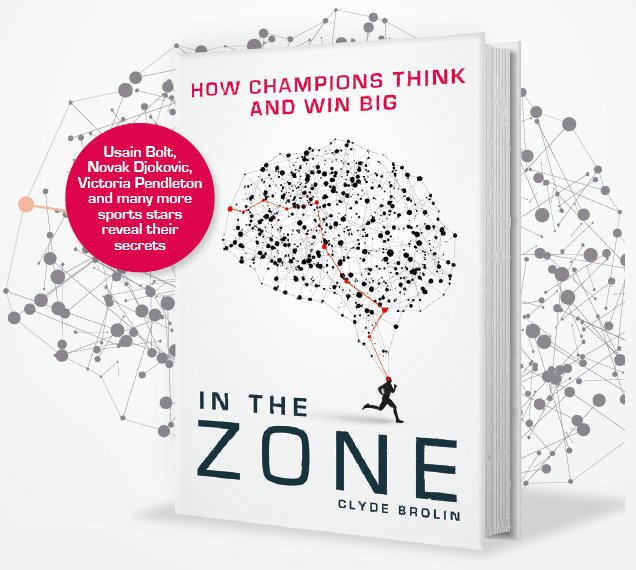
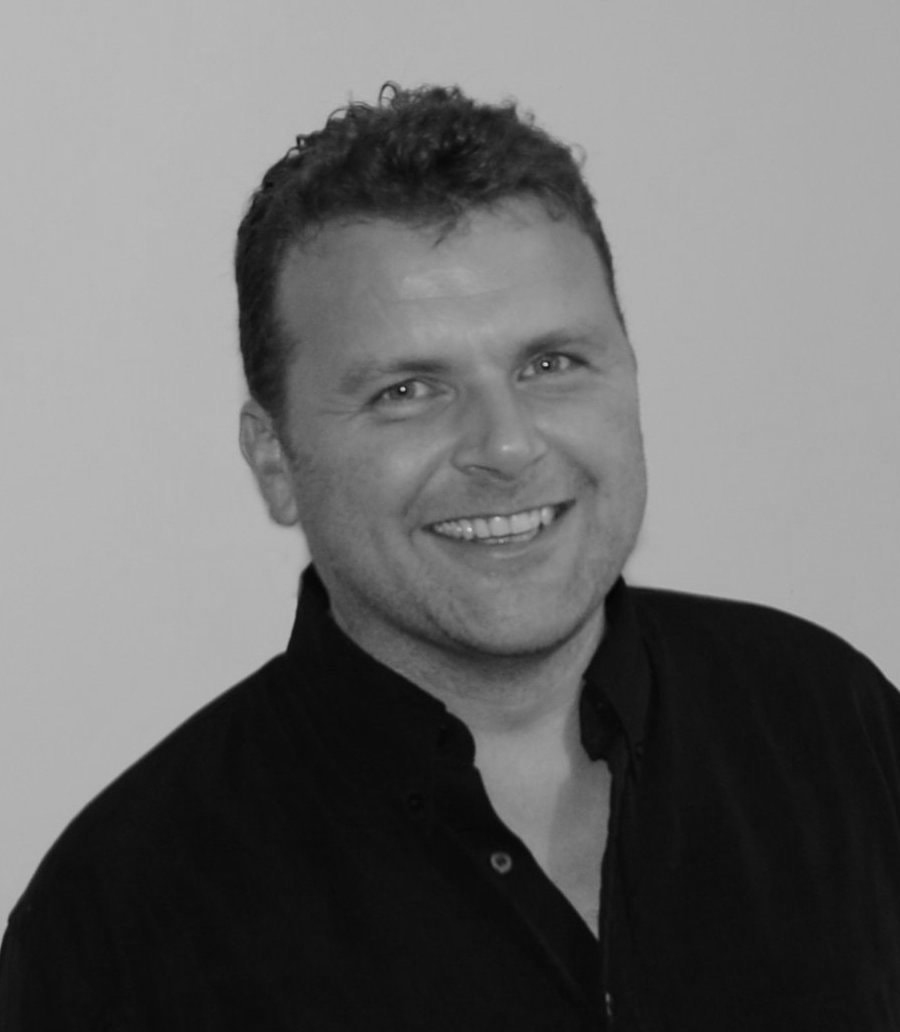
 RSS Feed
RSS Feed

